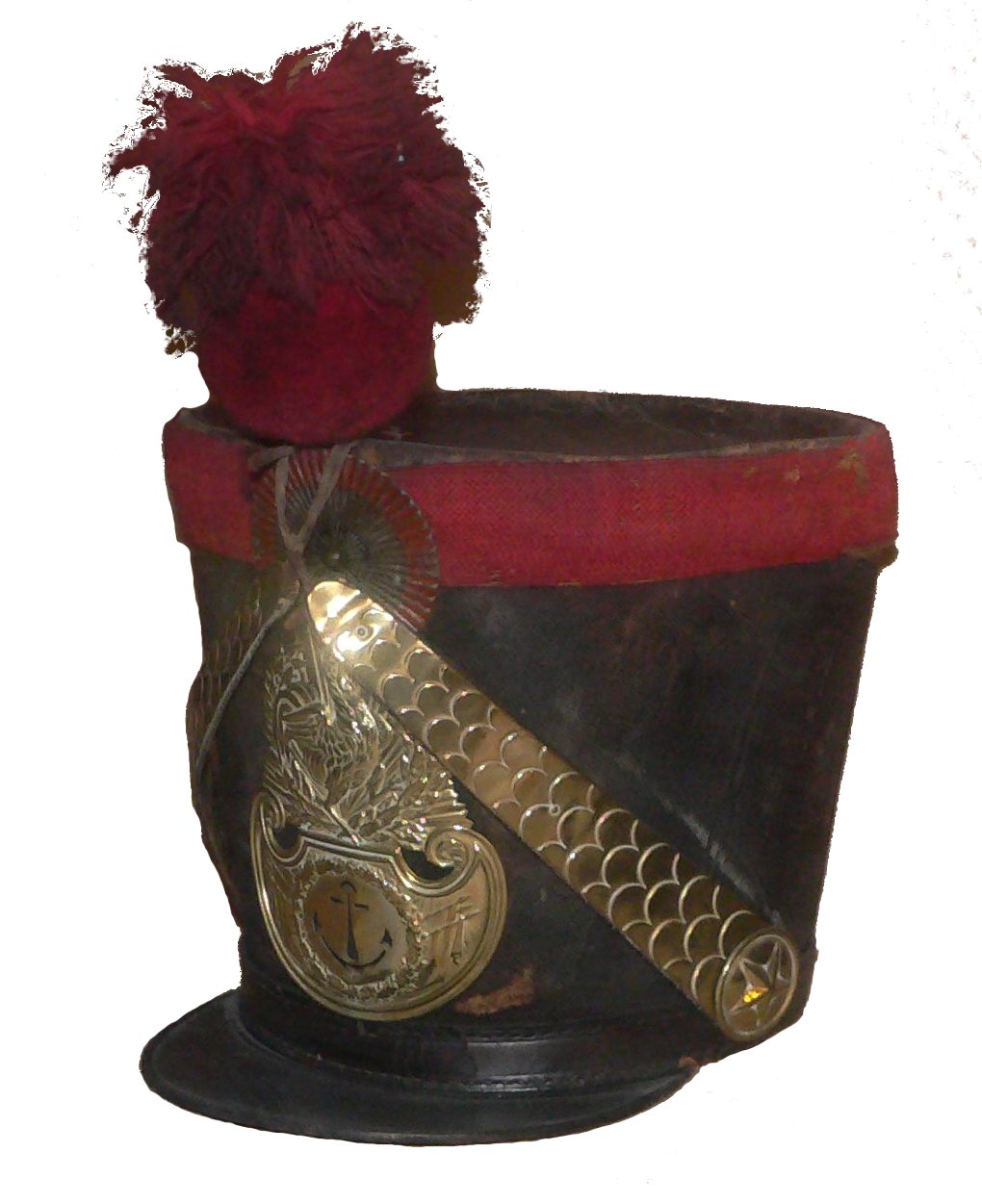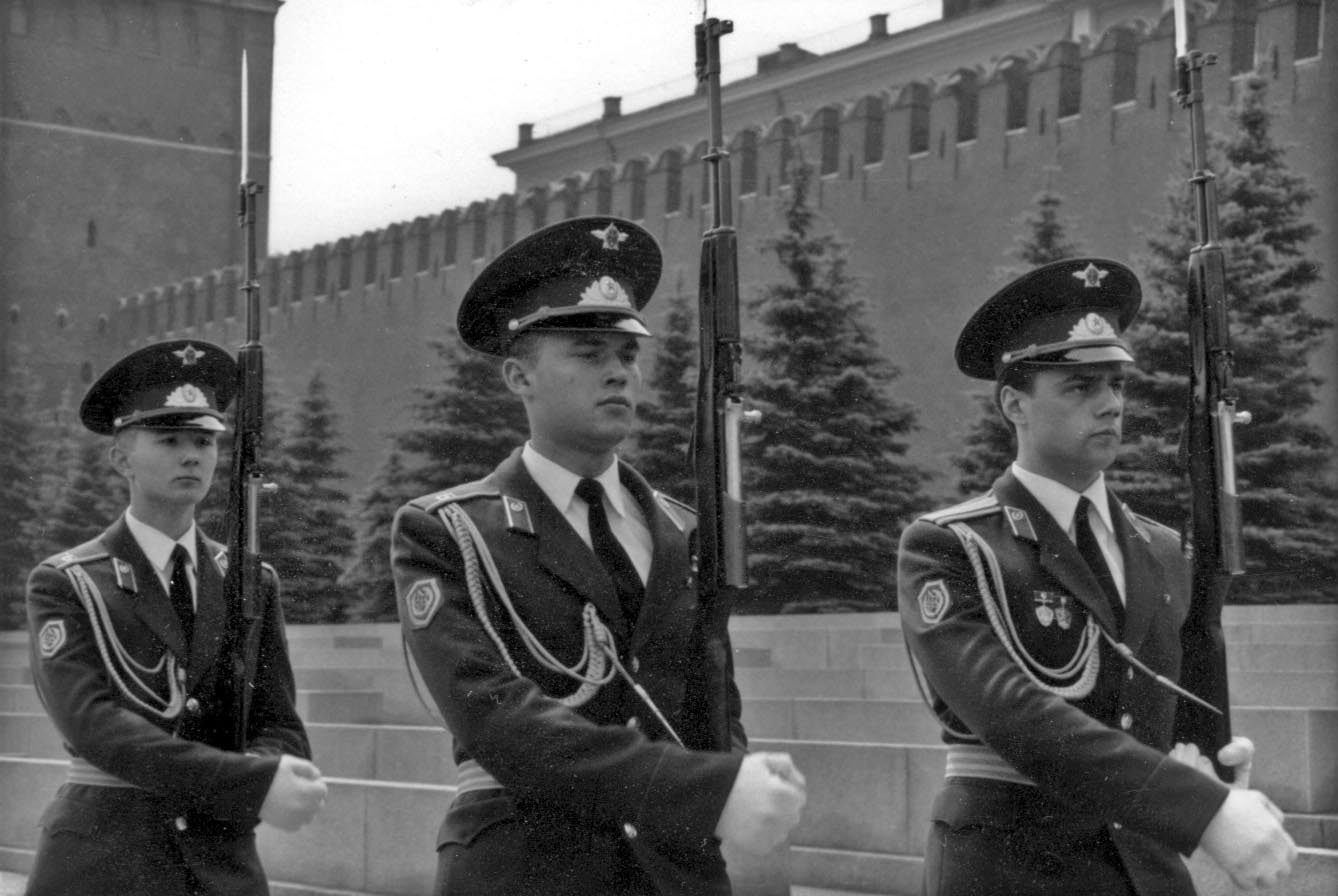|
Shako
A shako (, , or ) is a tall, cylindrical military cap, usually with a visor, and sometimes tapered at the top. It is usually adorned with an ornamental plate or badge on the front, metallic or otherwise; and often has a feather, plume (see hackle) or pompom attached at the top. Origins The word ''shako'' originated from the Hungarian name for the ''peak'', which Hungarian border soldiers ( ''Grenz-Infanterie'') added around 1790 to their previously visorless stovepipe-style hats. Originally these hats were part of the clothing commonly worn by shepherds, before being added to the uniform of the Hungarian hussar in the early 18th century. Other spellings include ''chako'', ''czako'', ''sjako'', ''schako'', ''schakot'' and ''tschako''. From 1800 on, the shako became a common military headdress worn by the majority of regiments in the armies of Europe and the Americas. Replacing in most instances the light bicorne, the shako was initially considered an improvement. Made of heavy ... [...More Info...] [...Related Items...] OR: [Wikipedia] [Google] [Baidu] |
Pompom
A pom-pom – also spelled pom-pon, pompom or pompon – is a decorative ball or tuft of fibrous material. The term may refer to large tufts used by cheerleaders, or a small, tighter ball attached to the top of a hat, also known as a bobble or toorie. Pom-poms may come in many colours, sizes, and varieties and are made from a wide array of materials, including wool, cotton, paper, plastic, thread, glitter and occasionally feathers. Pom-poms are shaken by cheerleaders, pom or dance teams, and sports fans during spectator sports. Spelling and etymology *''Webster's Third New International Dictionary'' (1961) gives the spelling as "pompon." *The ''New Oxford American Dictionary'' (third edition, 2010) gives the spelling as "pom-pom." *The ''American Heritage Dictionary of the English Language'' (5th edition, 2011) gives the spelling as "pompom" or "pompon." *''Webster's New World College Dictionary'' (fourth edition) gives the spelling as "pompom." ''Pom-pom'', also ... [...More Info...] [...Related Items...] OR: [Wikipedia] [Google] [Baidu] |
Black Brunswickers
The Brunswick Ducal Field-Corps (german: Herzoglich Braunschweigisches Feldcorps), commonly known as the Black Brunswickers in English and the ''Schwarze Schar'' (Black Troop, Black Horde, or Black Host) or ''Schwarze Legion'' (Black Legion) in German, were a military unit in the Napoleonic Wars. The corps was raised from volunteers by German-born Frederick William, Duke of Brunswick-Wolfenbüttel (1771–1815). The Duke was a harsh opponent of Napoleon Bonaparte's occupation of his native Germany. Formed in 1809 when war broke out between the First French Empire and the Austrian Empire, the corps initially comprised a mixed force, around 2,300 strong, of infantry, cavalry and later supporting artillery. Most units of the corps wore black uniforms, leading to the "black" nicknames of the unit, though some light units (such as sharpshooters and uhlans) wore green uniforms. The Brunswickers wore silvered skull "totenkopf" badges on their hats. Their title originated from Duke Frede ... [...More Info...] [...Related Items...] OR: [Wikipedia] [Google] [Baidu] |
Pickelhaube
The ( pl. ; from german: Pickel, lit=point' or 'pickaxe, and , , a general word for "headgear"), also , is a spiked helmet that was worn in the 19th and 20th centuries by Prussian and German military officers, firefighters and police. Although it is typically associated with the Prussian Army, which adopted it in 1842–43, the helmet was widely imitated by other armies during that period. It is still worn today as part of ceremonial wear in the militaries of certain countries, such as Sweden, Chile, and Colombia. History Origins The Pickelhaube was originally designed in 1842 by King Frederick William IV of Prussia, perhaps as a copy of similar helmets that were adopted at the same time by the Russian military. It is not clear whether this was a case of imitation, parallel invention, or if both were based on the earlier Napoleonic cuirassier. The early Russian type (known as "The Helmet of Yaroslav Mudry") was also used by cavalry, which had used the spike as a holder for ... [...More Info...] [...Related Items...] OR: [Wikipedia] [Google] [Baidu] |
Imperial Russian Army
The Imperial Russian Army (russian: Ру́сская импера́торская а́рмия, tr. ) was the armed land force of the Russian Empire, active from around 1721 to the Russian Revolution of 1917. In the early 1850s, the Russian Army consisted of more than 900,000 regular soldiers and nearly 250,000 irregulars (mostly Cossacks). Precursors: Regiments of the New Order Russian tsars before Peter the Great maintained professional hereditary musketeer corps known as '' streltsy''. These were originally raised by Ivan the Terrible; originally an effective force, they had become highly unreliable and undisciplined. In times of war the armed forces were augmented by peasants. The regiments of the new order, or regiments of the foreign order (''Полки нового строя'' or ''Полки иноземного строя'', ''Polki novovo (inozemnovo) stroya''), was the Russian term that was used to describe military units that were formed in the Tsardom of Russi ... [...More Info...] [...Related Items...] OR: [Wikipedia] [Google] [Baidu] |
Kremlin Regiment
The Kremlin Regiment (russian: Кремлёвский полк, Kremlyovskiy polk), also called the Presidential Regiment (russian: Президентский полк, Prezidentskiy polk), is a unique military regiment and part of the Russian Federal Protective Service with the status of a special unit. The regiment ensures the security of the Kremlin, its treasures, and state officials. In accordance with the federal law of December 8, 1997 "On Immortalizing the Soviet People’s Victory in the Great Patriotic War of 1941–1945", the regiment also maintains a guard of honor (russian: Почётный караул) at the eternal flame of the Tomb of the Unknown Soldier. The regiment is housed in the historic Kremlin Arsenal. History When the leaders of the Soviet Union moved from Petrograd to the Moscow Kremlin in early 1918, their protection was entrusted to the Red Latvian Riflemen, under the command of the Commandant of the Kremlin Garrison. In September 1918, the Latvia ... [...More Info...] [...Related Items...] OR: [Wikipedia] [Google] [Baidu] |
Portuguese Army
The Portuguese Army ( pt, Exército Português) is the land component of the Armed Forces of Portugal and is also its largest branch. It is charged with the defence of Portugal, in co-operation with other branches of the Armed Forces. With its origins going back to the 12th century, it can be considered one of the oldest active armies in the world. The Portuguese Army is commanded by the Chief of Staff of the Army (CEME), a subordinate of the Chief of the General Staff of the Armed Forces for the operational matters and a direct subordinate of the Ministry of National Defense for all other matters. The CEME is the only officer in the Army with the rank of General (Four-star rank). Presently, the Portuguese Army is an entirely professional force made of career personnel (officers and NCOs) and of volunteer personnel (officers, NCOs and enlisted ranks). Until the early 1990s, conscripts constituted the bulk of the Army personnel, with a cadre of career officers and NCOs respons ... [...More Info...] [...Related Items...] OR: [Wikipedia] [Google] [Baidu] |
Portuguese Marines
The Portuguese Marine Corps ( pt, Corpo de Fuzileiros, meaning literally "Corps of Fusiliers") constitutes the Elite Commando Raid Force and Special Operations branch of the Portuguese Navy . It has roles similar to the ones of the USMC Reconnaissance Battalions and of the Royal Marine Commandos. The Corps is specialised in amphibious warfare, coastal reconnaissance, unconventional warfare, guerrilla warfare, raids, maritime interdiction and boarding operations. It is an elite light infantry force, operating as a rapid-reaction force. Today’s Corpo de Fuzileiros is the premier raid force. The ''fuzileiros'' remains an all-volunteer force with an intensive screening and selection process followed by combat-focused training. ''Fuzileiros'' are resourced to maintain exceptional proficiency, experience and readiness. History The Portuguese Marines ( pt, Fuzileiros) have their direct origin in the oldest permanent military unit of Portugal, the Regiment of the Navy of the Crown of ... [...More Info...] [...Related Items...] OR: [Wikipedia] [Google] [Baidu] |
Peninsular War
The Peninsular War (1807–1814) was the military conflict fought in the Iberian Peninsula by Spain, Portugal, and the United Kingdom against the invading and occupying forces of the First French Empire during the Napoleonic Wars. In Spain, it is considered to overlap with the Spanish War of Independence. The war started when the French and Spanish armies invaded and occupied Portugal in 1807 by transiting through Spain, and it escalated in 1808 after Napoleonic France occupied Spain, which had been its ally. Napoleon Bonaparte forced the abdications of Ferdinand VII and his father Charles IV and then installed his brother Joseph Bonaparte on the Spanish throne and promulgated the Bayonne Constitution. Most Spaniards rejected French rule and fought a bloody war to oust them. The war on the peninsula lasted until the Sixth Coalition defeated Napoleon in 1814, and is regarded as one of the first wars of national liberation. It is also significant for the emergence of larg ... [...More Info...] [...Related Items...] OR: [Wikipedia] [Google] [Baidu] |
Non-commissioned Officer
A non-commissioned officer (NCO) is a military officer who has not pursued a commission. Non-commissioned officers usually earn their position of authority by promotion through the enlisted ranks. (Non-officers, which includes most or all enlisted personnel, are of lower rank than any officer.) In contrast, commissioned officers usually enter directly from a military academy, officer candidate school (OCS), or officer training school (OTS) after receiving a post-secondary degree. The NCO corps usually includes many grades of enlisted, corporal and sergeant; in some countries, warrant officers also carry out the duties of NCOs. The naval equivalent includes some or all grades of petty officer. There are different classes of non-commissioned officers, including junior (lower ranked) non-commissioned officers (JNCO) and senior/staff (higher ranked) non-commissioned officers (SNCO). Function The non-commissioned officer corps has been referred to as "the backbone" of the armed se ... [...More Info...] [...Related Items...] OR: [Wikipedia] [Google] [Baidu] |
Pith Helmet
The pith helmet, also known as the safari helmet, salacot, sola topee, sun helmet, topee, and topi) is a lightweight cloth-covered helmet made of sholapith. The pith helmet originates from the Spanish Empire, Spanish military adaptation of the native ''salakot'' headgear of the Philippines. It was often worn by European travellers and explorers, in the varying climates found in Southeast Asia, Africa, and the tropics, but was also used in many other contexts. It was routinely issued to European military personnel serving overseas in hot climates from the mid-nineteenth to the mid-twentieth century. Definition Typically, a pith helmet derives from either the sola plant, ''Aeschynomene aspera'', an Indian swamp plant, or from ''Aeschynomene paludosa''. In the narrow definition, a pith helmet is technically a type of sun helmet made out of pith material. However, the pith helmet may more broadly refer to the particular style of helmet. In this case, a pith helmet can be made out o ... [...More Info...] [...Related Items...] OR: [Wikipedia] [Google] [Baidu] |






.png)
.jpg)

